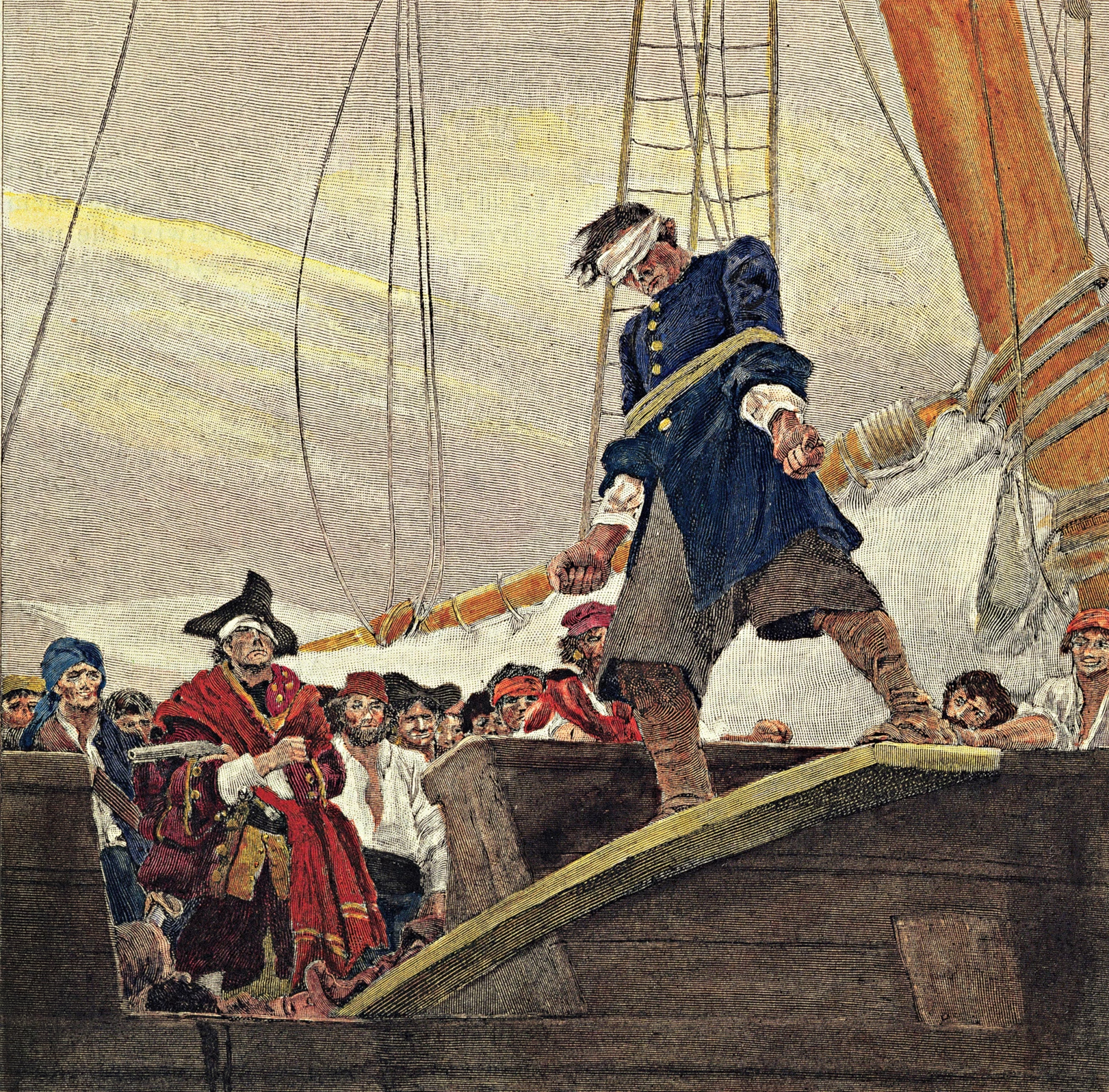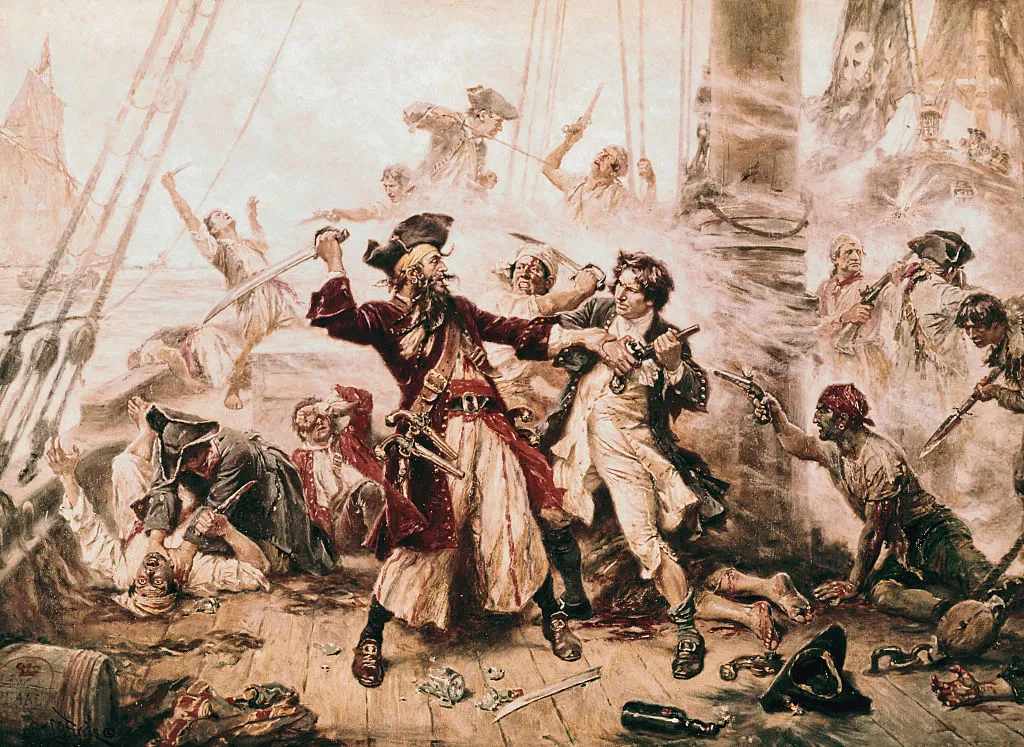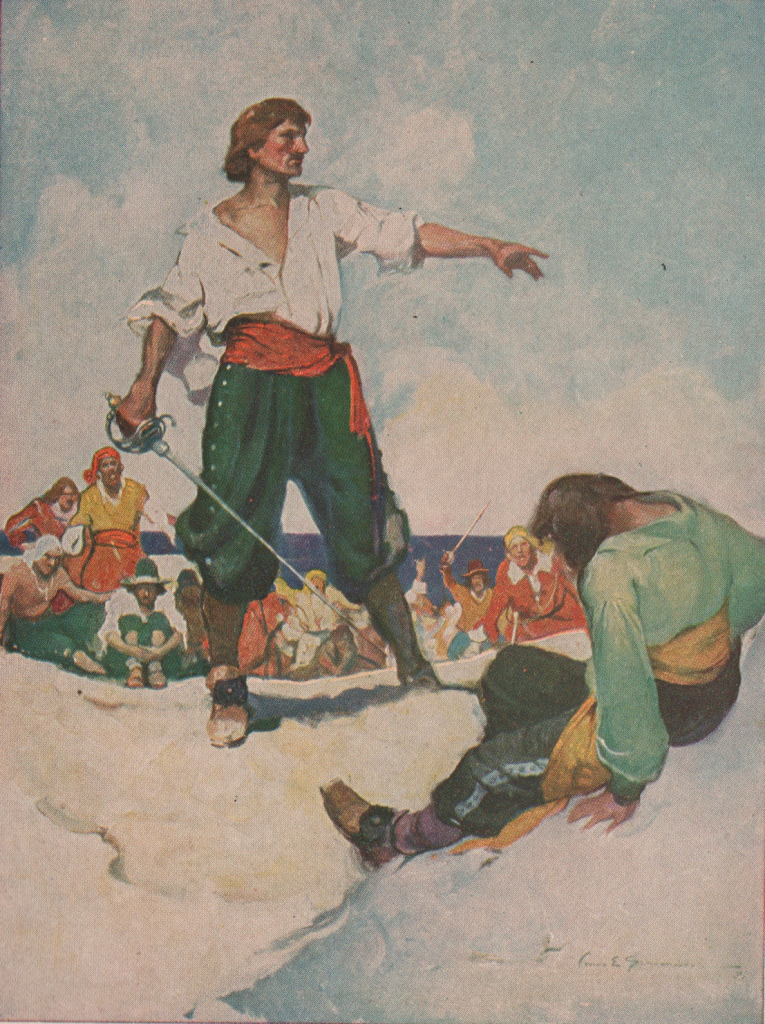“Beyond the Jolly Roger: Debunking the Myths and Misconceptions About Pirates”

When most people picture pirates, they conjure images of eye patches, peg legs, parrots on shoulders, buried treasure, and rum-fueled adventures aboard creaking wooden ships. Popular culture—from Robert Louis Stevenson’s Treasure Island to Disney’s Pirates of the Caribbean—has romanticized piracy, turning real-life criminals into folk heroes of the high seas.
But how much of what we think we know about pirates is actually true?
This article explores the most common misconceptions about pirates, backed by historical research, to separate fact from fantasy and offer a deeper, more nuanced understanding of piracy’s complex legacy.
Misconception 1: Pirates Buried Their Treasure
The idea of pirates burying chests full of gold on deserted islands is pure legend, largely popularized by Treasure Island (1883).
The Reality:
Most pirates didn’t bury treasure—they spent it quickly. Piracy was often a hand-to-mouth existence. Loot was usually traded for food, weapons, alcohol, and other necessities. Gold and silver were rare prizes; more often, cargoes included sugar, rum, spices, cloth, and foodstuffs.
Misconception 2: Pirates Always Said “Arrr!”
The stereotypical pirate accent and exclamations like “Arrr!” or “Avast!” owe more to 20th-century films—especially Robert Newton’s portrayal of Long John Silver in Disney’s Treasure Island (1950)—than to real history.
The Reality:
There’s no evidence that real pirates used such phrases. Pirates spoke in the same dialects and accents as the regions they came from—be it English, Welsh, French, Spanish, or African languages.

Misconception 3: Pirates Were Lawless Anarchists
Pirates are often depicted as chaotic criminals living without rules. In reality, many pirate crews had strict codes of conduct.
The Reality:
Pirates created democratic systems onboard their ships. They often elected their captains, shared plunder according to written agreements (known as Articles of Agreement), and punished infractions like stealing or desertion. These early examples of self-governance were surprisingly egalitarian—especially compared to the navies and merchant ships of the era.
Misconception 4: Pirates Were All Men
While the majority of pirates were male, the notion that piracy was exclusively a man’s world is incorrect.
The Reality:
Famous female pirates like Anne Bonny, Mary Read, and Ching Shih prove otherwise. Ching Shih, a Chinese pirate leader in the early 1800s, commanded a fleet of over 300 ships and 20,000–40,000 pirates. Women often disguised themselves as men to join crews—and sometimes rose through the ranks.
Misconception 5: Pirates Were All European or Caribbean
Piracy is most commonly associated with the Caribbean in the 17th and 18th centuries. But piracy is a global phenomenon that existed long before and long after the so-called “Golden Age.”
The Reality:
Piracy has existed in every major maritime region, from the Mediterranean and West Africa to the Indian Ocean and South China Sea. Vikings were technically pirates. So were North African Barbary corsairs. Even today, modern piracy remains a threat in places like the Gulf of Guinea and off the coast of Somalia.
Misconception 6: Pirates Were Dirty and Disorganized
Pop culture often paints pirates as filthy, drunken, and reckless.
The Reality:
While hygiene standards were poor across all seafaring occupations, pirates were sometimes better fed and healthier than naval or merchant sailors. They organized ships efficiently, rotated jobs, and took care of injured crewmates—a necessity for survival in hostile waters.
Misconception 7: The Jolly Roger Was the Universal Pirate Flag
The skull-and-crossbones symbol is now synonymous with piracy, but it wasn’t the standard.
The Reality:
Different pirate captains flew unique flags to convey specific messages—some used hourglasses, bleeding hearts, or skeletons. The so-called “Jolly Roger” was just one variant among many, and not every pirate flew a flag at all.
Misconception 8: Pirates Were Career Criminals
Many people assume that pirates were born criminals or lifelong outlaws.
The Reality:
In truth, many pirates were former sailors—including naval veterans, privateers, and merchant crew—who turned to piracy out of desperation. Harsh conditions, unfair treatment, poor pay, and the lure of wealth and autonomy pushed men to join pirate crews. Some only engaged in piracy for a brief time.
Misconception 9: Pirates Lived Short, Glorious Lives of Adventure
The myth of the noble outlaw glamorizes piracy as an adventurous lifestyle.
The Reality:
Pirate life was brutal and often short-lived. Most pirates faced violent deaths, hangings, or betrayal. Few achieved the legendary status portrayed in books and movies. Many lived in constant fear of capture or mutiny.

Conclusion: Romantic Fantasy vs. Harsh Reality
Pirates continue to capture the imagination of storytellers, historians, and pop culture. But peeling back the myths reveals a far more complicated and sobering reality. These were not just swashbuckling antiheroes—they were survivors, opportunists, and in many cases, revolutionary figures pushing back against authoritarian maritime rule.
Understanding the truth about pirates not only dispels long-standing myths, but also offers a window into the socio-political conditions of the time—showing us how history, economics, and human resilience shaped the legends of the sea.




